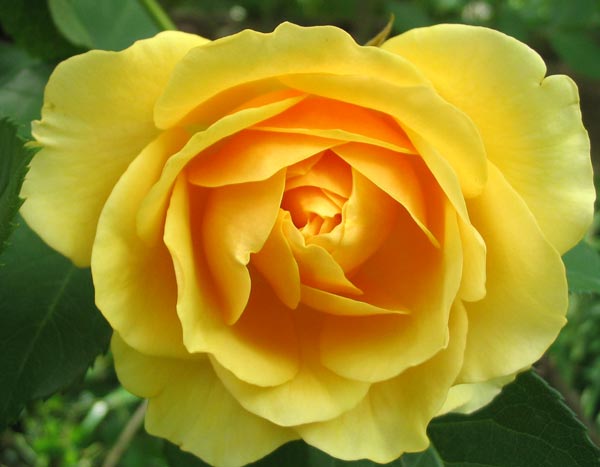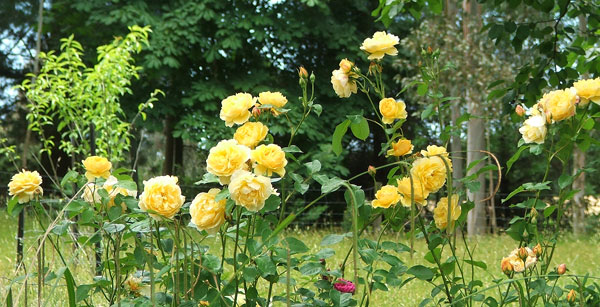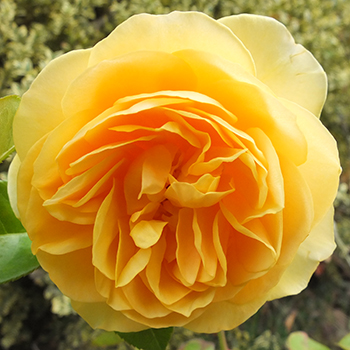Graham Thomas Rose
Graham Thomas was one of the very first David Austin roses that I bought for the garden. I didn't realise then how big he would grow, but luckily I planted him alongside the house fence. Phew! Room to breathe and spread.

Graham Thomas Close-Up
The first year I remember the sheep were still grazing on the other side of the fence, and the lambs in particular liked to reach through and eat the Graham Thomas rose canes. It wasn't long before my garden developments expanded into the sheep paddock, though, and the animals were banished further afield.

Graham Thomas Roses
Graham Thomas must be the most well known of David Austin's yellow English roses. It's the one everyone would like to try growing blue things underneath - including me. But the trick is that Graham Thomas flowers a little later than other roses. My well-meaning colour plans were thrown onto the compost when a rich magenta dahlia barged in and planted itself right alongside.
But things do change in a garden. The original Graham Thomas is suffering - who knows why. It is rather close to a large gum tree, and maybe the soil is just not good enough. So in 2015 I bought three Graham Thomases from a sale at the rose nursery. I planted them in the sun and space of the Allotment garden, its soil enriched by much organic matter.

Graham Thomas Rose
Wrong labels?
These roses have rather a different look to my original Graham Thomas. So much so that I did wonder if they had the wrong labels. They could be Golden Celebrations, for example. I've no way of knowing, so their photographs have to be included on this page. Their flowering time is later in the rose season, as I'd expect, but some of the canes are very long, and some of the blooms are paler than I'd expect. And what about those pointy buds? Eek. I need to do some rose research.
Egg yolk yellow...
The flowers of this lovely rose should be a beautiful egg yolk yellow. They come to pieces very easily when it's windy. New Zealand gardeners take note!





